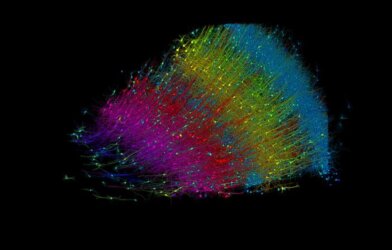Dr. Suess had it going on about autism. “Today you are you, that is truer than true. There is no one alive who is youer than you. Be who you are and say what you feel, those who mind don’t matter and those who matter don’t mind.”
Autism Spectrum Disorder (ASD) is a neurodevelopment disorder that causes a wide range of impairments in social communication and restricted and repetitive behaviors. A new study examines the connectivity between brain networks, to better understand the neural basis of disabling symptoms. The research also identifies important new targets for intervention to improve cognitive functioning in people on the autism spectrum.
Scientists used functional magnetic resonance imaging (fMRI) to compare 325 individuals with ASD with 356 people in a control group. They measured connectivity between three key brain networks: the default-mode network (DMN), the frontoparietal network (FPN), and the salience network.
“The role of each of these intrinsic brain networks has been investigated individually in people with ASD,” says Dr. Tae-Ho Lee, PhD, co-senior investigator of the study from Virginia Tech, in a statement. “Our study is the first to examine how these three networks interact at the large-scale brain-systems level, rather than focusing on a single network or static connection.”
The authors determined that the salience network excessively activates the DMN – which is associated with mind-wandering and introspective thoughts – while inhibiting the FPN in those with ASD. In the control group, the salience network deactivates the DMN and activates the FPN, which directs attention to the external surroundings spontaneously and momentarily. It also monitors and speeds responses to environmental changes.
“Our study provides a potential mechanistic explanation of why ASD is associated with more internally-focused cognition, including mind-wandering and prospection, and less of a focus on external environmental cues,” adds Dr. Hyungwook Yim, PhD, of Hanyang University in Seoul, Republic of Korea.
The study is published in the journal Biological Psychiatry: Cognitive Neuroscience and Neuroimaging.












